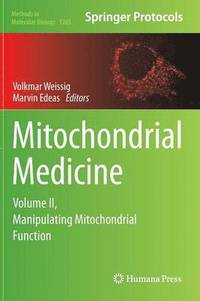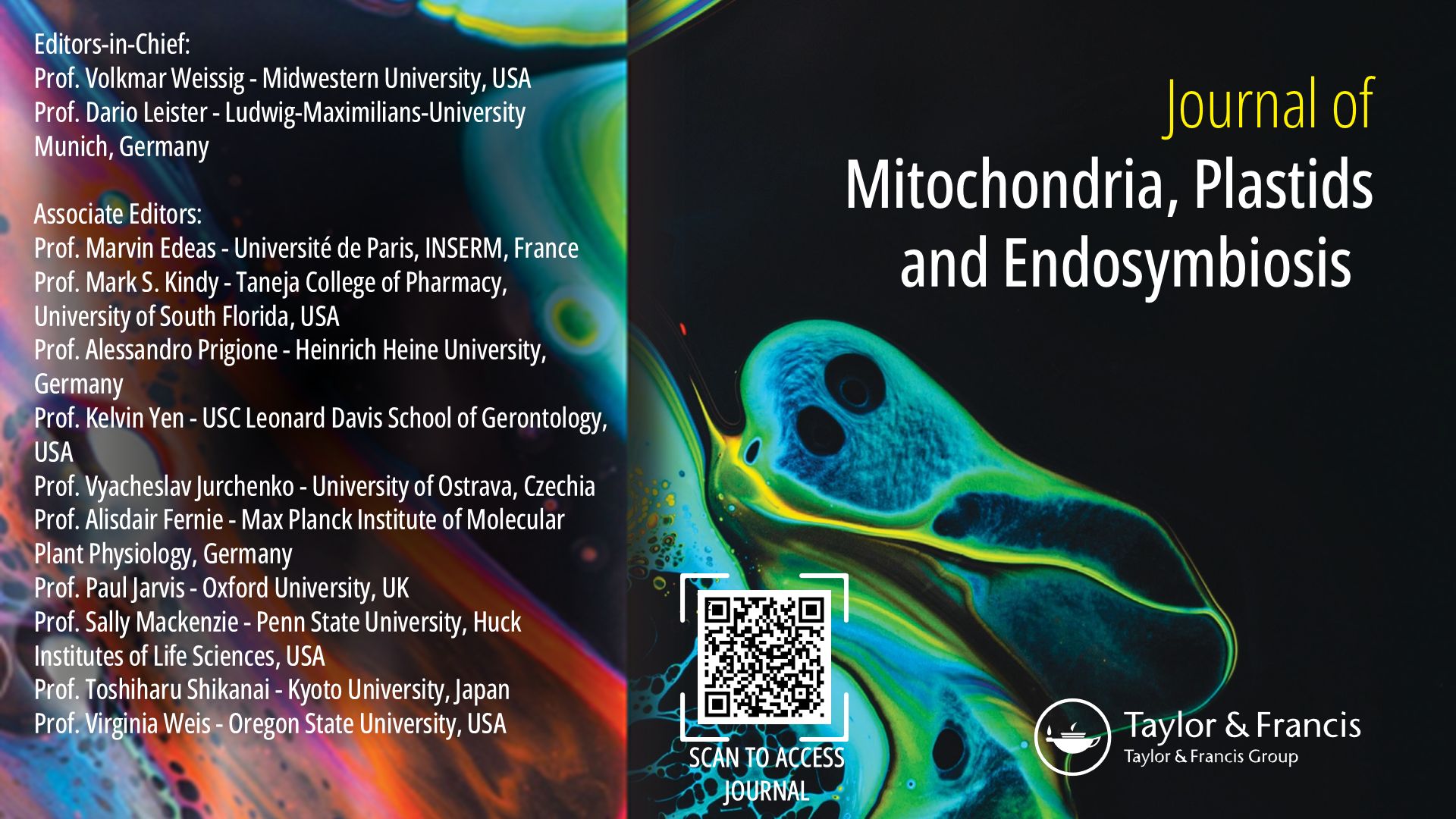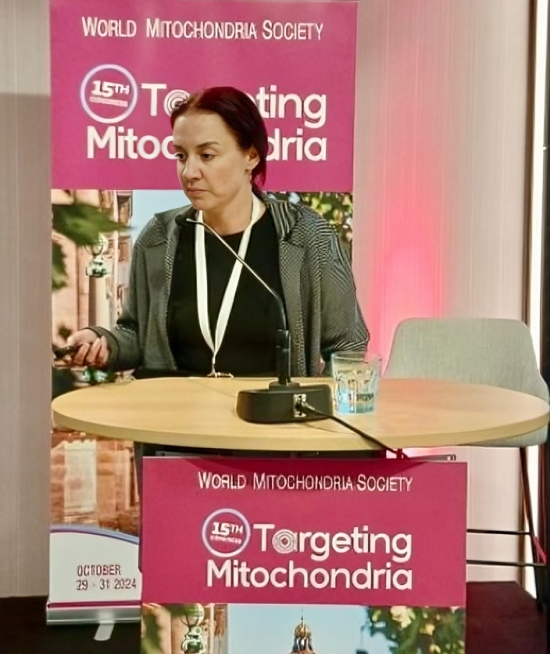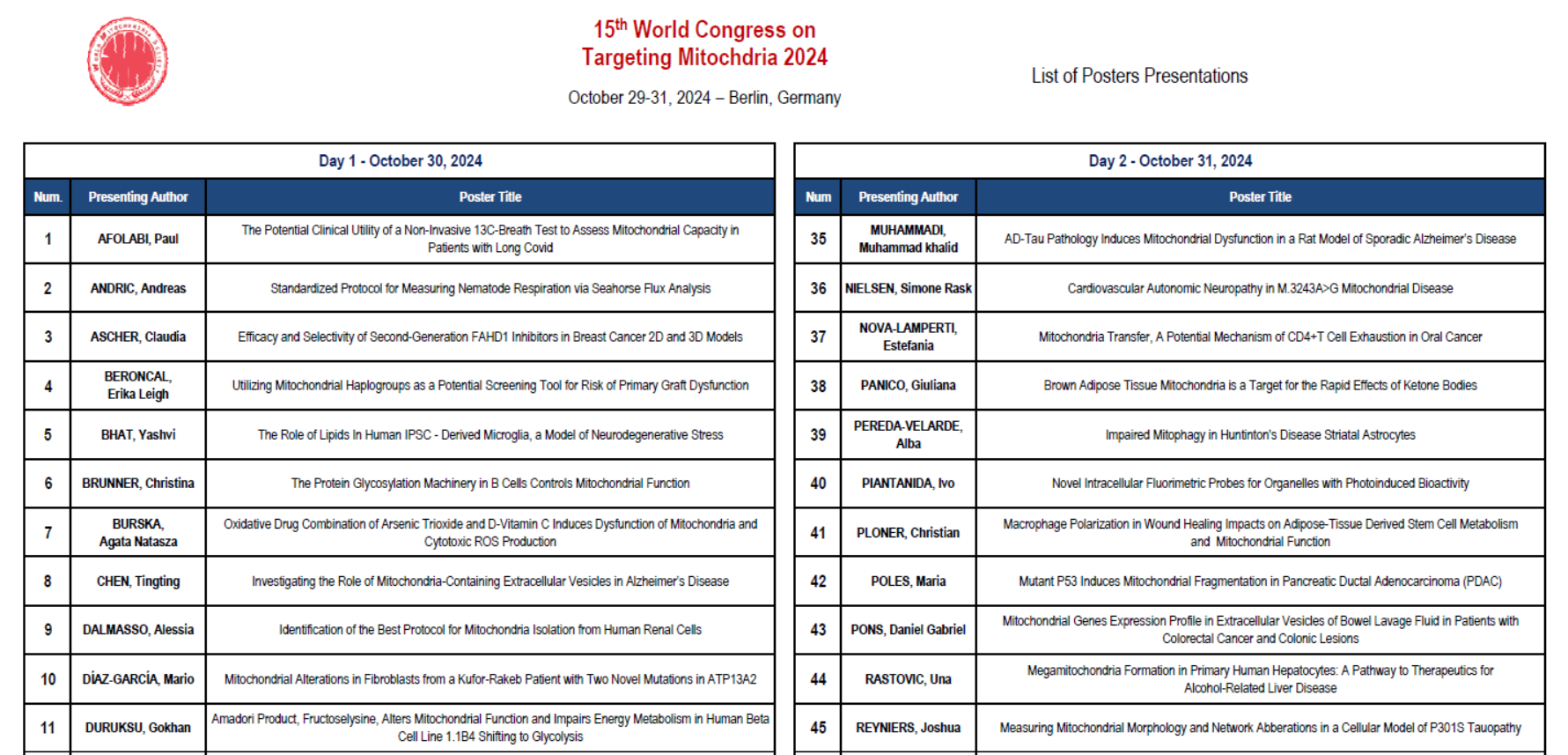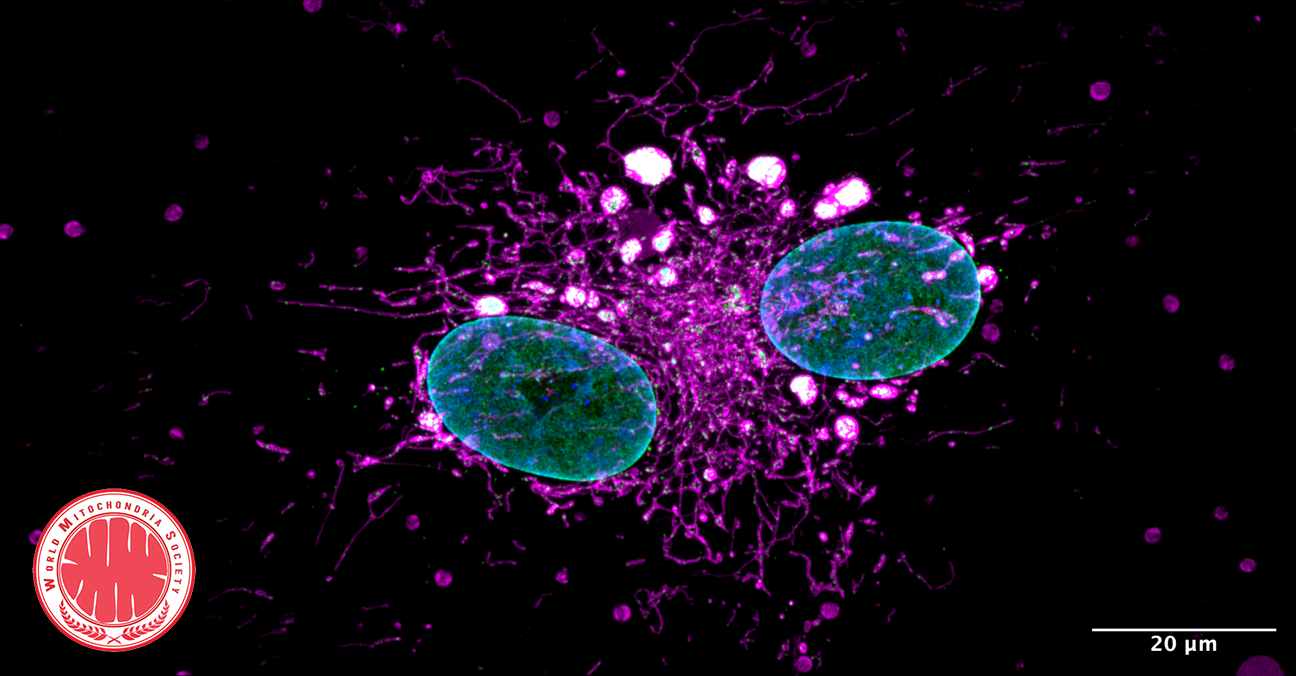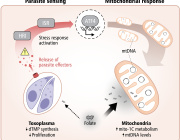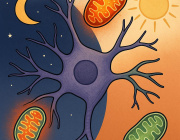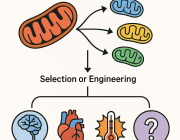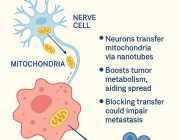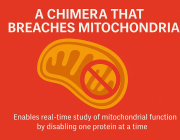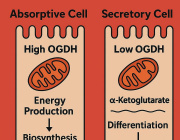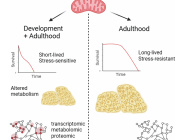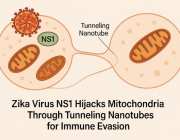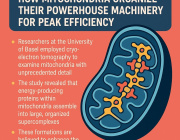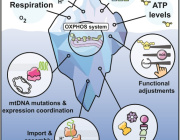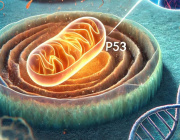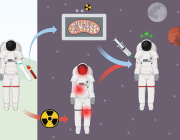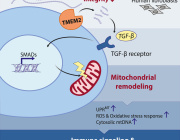Cells burn more calories after just one bout of moderate aerobic exercise, OSU study finds

In a recent study testing the effects of exercise on overall metabolism, researchers at Oregon State University found that even a single session of moderate aerobic exercise makes a difference in the cells of otherwise sedentary people.
Mitochondria are the part of the cell responsible for the biological process of respiration, which turns fuels such as sugars and fats into energy, so the researchers focused only on mitochondria function.
"What we found is that, regardless of what fuel the mitochondria were using, there were mild increases in the ability to burn off the fuels," said Matt Robinson, lead author on the study and an assistant professor in the College of Public Health and Human Sciences.
OSU researchers recruited participants who do not follow a regular exercise routine and had them ride a stationary bike for an hour at a moderate intensity. They biopsied their muscles 15 minutes later to test how efficient the mitochondria were after the exercise was completed and compared those results with a resting day.
Post-exercise, study participants' mitochondria burned 12-13% more fat-based fuel and 14-17% more sugar-based fuel. While the effects were not drastic, they were consistent, Robinson said.
"It's pretty remarkable that even after just one hour of exercise, these people were able to burn off a little more fuel," he said.
Previous research in the field has long established that regular exercise creates lasting change in people's metabolism, making their bodies burn more energy even when they're not working out.
Prior studies have looked at highly trained or athletic people, but Robinson's team wanted to look specifically at singular bouts of exercise in people who were generally active and disease-free but who did not have structured exercise regimes. These people were on the lower end of fitness, which is associated with low mitochondrial abundance and energy production. Participants were monitored while working out at approximately 65% of their maximal effort, where they could keep up the cycling pace for an hour or more and still comfortably carry on a conversation.
Robinson said they're hoping these results help break down the mental barrier of people thinking they need to be elite athletes for exercise to make an impact on their health.
"From a big picture health perspective, it's very encouraging for people to realize that you can get health benefits from a single session of exercise," Robinson said. "We're trying to encourage people, 'You did one, why don't you try to do two? Let's do three.'
"We know that exercise is good for you, in general. But those benefits of that single bout of exercise seem to fade away after a day or two. You get the long-term benefits when you do that exercise again and again and you make it a regular habit."
In this study, Robinson's research team focused narrowly on mitochondria to find out how big a role mitochondria play in the overall function of muscle metabolism. Other studies are looking at changes in blood flow to the muscle and how the muscle metabolizes fats versus sugars.
From a disease perspective, Robinson said it's clear that obesity and diabetes involve impairments in metabolism. Physiologically, when the body undergoes exercise, sugars tend to be burned off first while fats are stored, but in cases of diabetes and obesity, there is some dysregulation in metabolism that causes the body to not be able to switch between the two types of fuel.
Exercise can help reset that system, he said.
"Since those get burned off in the mitochondria, our hope is that with exercise, we could increase the mitochondria and then improve how the body burns off fats and sugars," he said.
News source: www.sciencedaily.com
Article source: Sean A. Newsom, Harrison D. Stierwalt, Sarah E. Ehrlicher, Matthew M. Robinson. Substrate-specific Respiration of Isolated Skeletal Muscle Mitochondria after 1 h of Moderate Cycling in Sedentary Adults. Medicine & Science in Sports & Exercise, 2021; Publish Ahead of Print DOI: 10.1249/MSS.0000000000002615
Parkinson's, cancer, type 2 diabetes share a key element that drives disease

When cells are stressed, chemical alarms go off, setting in motion a flurry of activity that protects the cell's most important players. During the rush, a protein called Parkin hurries to protect the mitochondria, the power stations that generate energy for the cell. Now Salk researchers have discovered a direct link between a master sensor of cell stress and Parkin itself. The same pathway is also tied to type 2 diabetes and cancer, which could open a new avenue for treating all three diseases.
"Our findings represent the earliest step in Parkin's alarm response that anyone's ever found by a long shot. All the other known biochemical events happen at one hour; we've now found something that happens within five minutes," says Professor Reuben Shaw, director of the NCI-designated Salk Cancer Center and senior author of the new work, detailed in Science Advances on April 7, 2021. "Decoding this major step in the way cells dispose of defective mitochondria has implications for a number of diseases."
Parkin's job is to clear away mitochondria that have been damaged by cellular stress so that new ones can take their place, a process called mitophagy. However, Parkin is mutated in familial Parkinson's disease, making the protein unable to clear away damaged mitochondria. While scientists have known for some time that Parkin somehow senses mitochondrial stress and initiates the process of mitophagy, no one understood exactly how Parkin was first sensing problems with the mitochondria -- Parkin somehow knew to migrate to the mitochondria after mitochondrial damage, but there was no known signal to Parkin until after it arrived there.
Shaw's lab, which is well known for their work in the fields of metabolism and cancer, spent years intensely researching how the cell regulates a more general process of cellular cleaning and recycling called autophagy. About ten years ago, they discovered that an enzyme called AMPK, which is highly sensitive to cellular stress of many kinds, including mitochondrial damage, controls autophagy by activating an enzyme called ULK1.
Following that discovery, Shaw and graduate student Portia Lombardo began searching for autophagy-related proteins directly activated by ULK1. They screened about 50 different proteins, expecting about 10 percent to fit. They were shocked when Parkin topped the list. Biochemical pathways are usually very convoluted, involving up to 50 participants, each activating the next. Finding that a process as important as mitophagy is initiated by only three participants -- first AMPK, then ULK1, then Parkin -- was so surprising that Shaw could scarcely believe it.
To confirm the findings were correct, the team used mass spectrometry to reveal precisely where ULK1 was attaching a phosphate group to Parkin. They found that it landed in a new region other researchers had recently found to be critical for Parkin activation but hadn't known why. A postdoctoral fellow in Shaw's lab, Chien-Min Hung, then did precise biochemical studies to prove each aspect of the timeline and delineated which proteins were doing what, and where. Shaw's research now begins to explain this key first step in Parkin activation, which Shaw hypothesizes may serve as a "heads-up" signal from AMPK down the chain of command through ULK1 to Parkin to go check out the mitochondria after a first wave of incoming damage, and, if necessary, trigger destruction of those mitochondria that are too gravely damaged to regain function.
The findings have wide-ranging implications. AMPK, the central sensor of the cell's metabolism, is itself activated by a tumor suppressor protein called LKB1 that is involved in a number of cancers, as established by Shaw in prior work, and it is activated by a type 2 diabetes drug called metformin. Meanwhile, numerous studies show that diabetes patients taking metformin exhibit lower risks of both cancer and aging comorbidities. Indeed, metformin is currently being pursued as one of the first ever "anti-aging" therapeutics in clinical trials.
"The big takeaway for me is that metabolism and changes in the health of your mitochondria are critical in cancer, they're critical in diabetes, and they're critical in neurodegenerative diseases," says Shaw, who holds the William R. Brody Chair. "Our finding says that a diabetes drug that activates AMPK, which we previously showed can suppress cancer, may also help restore function in patients with neurodegenerative disease. That's because the general mechanisms that underpin the health of the cells in our bodies are way more integrated than anyone could have ever imagined."
News Source: www.sciencedaily.com
Article: Chien-Min Hung, Portia S. Lombardo, Nazma Malik, Sonja N. Brun, Kristina Hellberg, Jeanine L. Van Nostrand, Daniel Garcia, Joshua Baumgart, Ken Diffenderfer, John M. Asara, Reuben J. Shaw. AMPK/ULK1-mediated phosphorylation of Parkin ACT domain mediates an early step in mitophagy. Science Advances, 2021; 7 (15): eabg4544 DOI: 10.1126/sciadv.abg4544
Rapid blood test identifies COVID-19 patients at high risk of severe disease
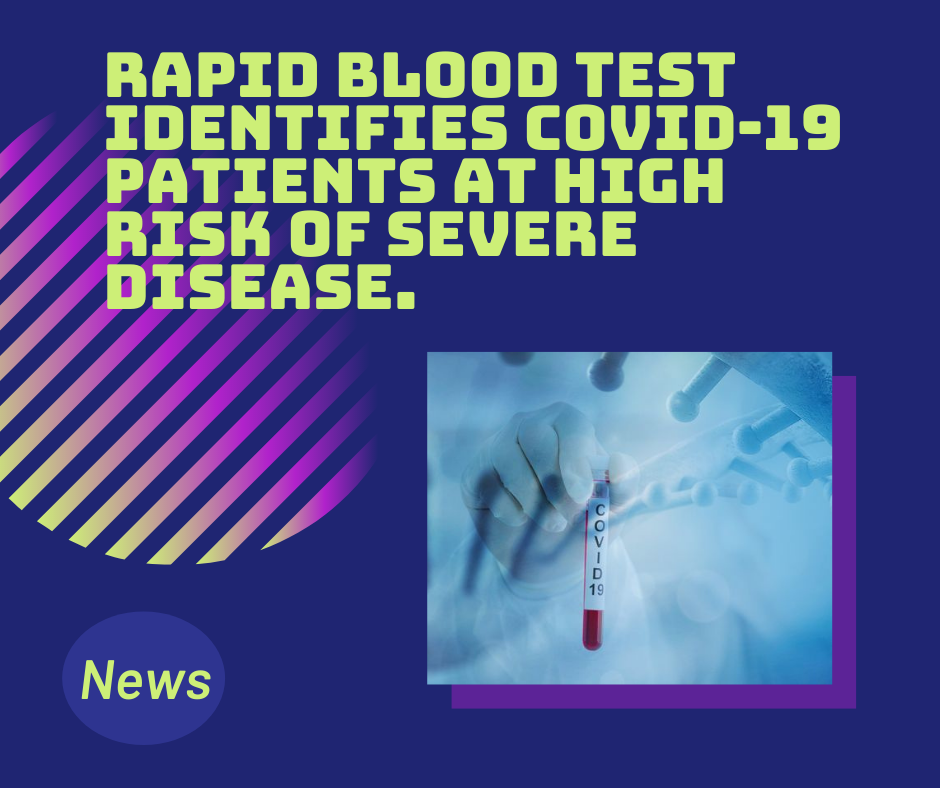
One of the most vexing aspects of the COVID-19 pandemic is doctors' inability to predict which newly hospitalized patients will go on to develop severe disease, including complications that require the insertion of a breathing tube, kidney dialysis or other intensive care. Knowledge of a patient's age and underlying medical conditions can help predict such outcomes, but there are still surprises when younger, seemingly healthier patients suffer severe complications that can lead to death.
Now, scientists at Washington University School of Medicine in St. Louis have shown that a relatively simple and rapid blood test can predict -- within a day of a hospital admission -- which patients with COVID-19 are at highest risk of severe complications or death.
The study, published Jan. 14 in JCI Insight, involved nearly 100 patients newly admitted to the hospital with COVID-19.
The blood test measures levels of mitochondrial DNA, a unique type of DNA molecule that normally resides inside the energy factories of cells. Mitochondrial DNA spilling out of cells and into the bloodstream is a sign that a particular type of violent cell death is taking place in the body.
"Doctors need better tools to evaluate the status of COVID-19 patients as early as possible because many of the treatments -- such as monoclonal antibodies -- are in short supply, and we know that some patients will get better without intensive treatments," said co-senior author Andrew E. Gelman, PhD, the Jacqueline G. and William E. Maritz Endowed Chair in Immunology and Oncology in the Department of Surgery.
"There's so much we still don't understand about this disease," he added. "In particular, we need to understand why some patients, irrespective of their ages or underlying health in some cases, go into this hyperinflammatory death spiral. Our study suggests that tissue damage may be one cause of this spiral, since the mitochondrial DNA that is released is itself an inflammatory molecule."
The researchers said the test could serve as a way to predict disease severity as well as a tool to better design clinical trials, identifying patients who might, for example, benefit from specific investigational treatments. They also said they would like to evaluate whether the test could serve as a way to monitor the effectiveness of new therapies. Presumably, effective treatments would lower mitochondrial DNA levels.
"We will need larger trials to verify what we found in this study, but if we could determine in the first 24 hours of admission whether a patient is likely to need dialysis or intubation or medication to keep their blood pressure from dropping too low, that would change how we triage the patient, and it might change how we manage them much earlier in the disease course," said co-senior author Hrishikesh S. Kulkarni, MD, an assistant professor of medicine.
The researchers, including co-first authors Davide Scozzi, MD, PhD, a staff scientist, and Marlene Cano, PhD, a postdoctoral research scholar, evaluated 97 patients with COVID-19 at Barnes-Jewish Hospital, measuring their mitochondrial DNA levels on the first day of their hospital stays. They found that mitochondrial DNA levels were much higher in patients who eventually were admitted to the ICU, intubated or died. The researchers found this association held independently of a patient's age, sex and underlying health conditions.
On average, mitochondrial DNA levels were about tenfold higher in patients with COVID-19 who developed severe lung dysfunction or eventually died. Those with elevated levels were almost six times more likely to be intubated, three times more likely to be admitted to the ICU and almost twice as likely to die compared with those with lower levels.
Further, the test predicted outcomes as well as or better than existing markers of inflammation currently measured in patients hospitalized with COVID-19. Most other markers of inflammation measured in patients with COVID-19, including those still under investigation, are general markers of systemic inflammation, rather than inflammation specific to cell death, according to the researchers.
"Viruses can cause a type of tissue damage called necrosis that is a violent, inflammatory response to the infection," Gelman said. "The cell breaks open, releasing the contents, including mitochondrial DNA, which itself drives inflammation. In COVID-19 patients, there has been anecdotal evidence of this type of cell and tissue damage in the lung, heart and kidney. We think it's possible that measures of mitochondrial DNA in the blood may be an early sign of this type of cell death in vital organs."
The researchers also emphasized that the test is quick and straightforward to perform in most hospital settings because it uses the same machinery that processes the standard PCR test for COVID-19. The method they developed allows mitochondrial DNA levels to be quantified directly in the blood. Without requiring intermediate steps to extract the DNA from the blood, the technique returned results in less than an hour.
Before they can apply for approval from the Food and Drug Administration (FDA), the scientists will need to verify that the test is accurate in a larger multi-center trial. They have plans to expand the research to more sites.
The study utilized samples obtained from the School of Medicine's COVID-19 biorepository, which was developed by co-authors Jane O'Halloran, MD, PhD, an assistant professor of medicine; Charles Goss, PhD, an instructor in biostatistics; and Phillip Mudd, MD, PhD, an assistant professor of emergency medicine.
This work was supported by the Barnes Jewish Hospital Foundation; the Children's Discovery Institute; the National Institutes of Health (NIH), grant numbers, R01HL094601, P01AI116501 and K08HL148510; and the Washington University Institute of Clinical and Translational Sciences (ICTS) COVID-19 Research Program, which is funded by the National Center for Advancing Translational Sciences (NCATS) of the NIH, grant number UL1TR002345.
News source: www.sciencedaily.com
Article source: Davide Scozzi, Marlene Cano, Lina Ma, Dequan Zhou, Ji Hong Zhu, Jane A. O’Halloran, Charles W. Goss, Adriana M. Rauseo, Zhiyi Liu, Sanjaya Kumar Sahu, Valentina Peritore, Monica Rocco, Alberto Ricci, Rachele Amodeo, Laura Aimati, Mohsen Ibrahim, Ramsey R. Hachem, Daniel Kreisel, Philip A. Mudd, Hrishikesh S. Kulkarni, Andrew E. Gelman. Circulating mitochondrial DNA is an early indicator of severe illness and mortality from COVID-19. JCI Insight, 2021; DOI: 10.1172/jci.insight.143299
Bird blood is a heating system in winter

Credit: Dr. Andreas Nord, researcher in evolutionary ecology at Lund University, Sweden
Researchers at Lund University in Sweden have discovered that bird blood produces more heat in winter, when it is colder, than in autumn. The study is published in The FASEB Journal.
The secret lies in the energy factories of cells, the mitochondria. Mammals have no mitochondria in their red blood cells, but birds do, and according to the research team from Lund and Glasgow this means that the blood can function as a central heating system when it is cold.
"In winter, the mitochondria seem to prioritize producing more heat instead of more energy. The blood becomes a type of radiator that they can turn up when it gets colder," says Andreas Nord, researcher in evolutionary ecology at Lund University who led the study.
Until now, the common perception has been that birds keep warm by shivering with their large pectoral muscles and fluffing up their feathers. Less is known about other heat-regulating processes inside birds.
To investigate the function of mitochondria, the researchers examined great tits, coal tits and blue tits on two different occasions: early autumn and late winter. The researchers took blood samples from the birds and isolated the red blood cells. By using a so-called cell respirometer, a highly sensitive instrument that can measure how much oxygen the mitochondria consume, the researchers were able to calculate how much of the oxygen consumption was spent on producing energy and how much was spent on creating heat. Finally, they also measured the amount of mitochondria in each blood sample.
The results show that the blood samples taken in winter contained more mitochondria and that the mitochondria worked harder. However, the work was not to produce more energy, something the researchers had assumed since birds have a much higher metabolism in winter.
"We had no idea that the birds could regulate their blood as a heating system in this way, so we were surprised," says Andreas Nord.
The researchers will now investigate whether cold weather is the whole explanation for the birds' blood producing more heat in winter. Among other things, they will study whether the food that the birds eat in winter affects the mitochondria.
Dr. Andreas Nord will join the Targeting Mitochondria 2021 Congress and will present his study on Avian red blood cell mitochondria produce more heat in winter than in autumn.News source: www.sciencedaily.com
Article: Andreas Nord, Neil B. Metcalfe, Jennifer L. Page, Anna Huxtable, Dominic J. McCafferty, Neal J. Dawson. Avian red blood cell mitochondria produce more heat in winter than in autumn. The FASEB Journal, 2021; 35 (5) DOI: 10.1096/fj.202100107R
Scientists solve a 100-year-old mystery about cancer

The year 2021 marks the 100th anniversary of a fundamental discovery that's taught in every biochemistry textbook. In 1921, German physician Otto Warburg observed that cancer cells harvest energy from glucose sugar in a strangely inefficient manner: rather than "burn" it using oxygen, cancer cells do what yeast do -- they ferment it. This oxygen-independent process occurs quickly, but leaves much of the energy in glucose untapped.
Various hypotheses to explain the Warburg effect have been proposed over the years, including the idea that cancer cells have defective mitochondria -- their "energy factories" -- and therefore cannot perform the controlled burning of glucose. But none of these explanations has withstood the test of time. (Cancer cells' mitochondria work just fine, for example.)
Now a research team at the Sloan Kettering Institute led by immunologist Ming Li offers a new answer, based on a hefty set of genetic and biochemical experiments and published January 21 in the journal Science.
It comes down to a previously unappreciated link between Warburg metabolism and the activity of a powerhouse enzyme in the cell called PI3 kinase.
"PI3 kinase is a key signaling molecule that functions almost like a commander-in-chief of cell metabolism," Dr. Li says. "Most of the energy-costly cellular events in cells, including cell division, occur only when PI3 kinase gives the cue."
As cells shift to Warburg metabolism, the activity of PI3 kinase is increased, and in turn, the cells' commitment to divide is strengthened. It's a bit like giving the commander-in-chief a megaphone.
The findings revise the commonly accepted view among biochemists that sees metabolism as secondary to cell signaling. They also suggest that targeting metabolism could be an effective way to thwart cancer growth.
Challenging the Textbook View
Dr. Li and his team, including graduate student Ke Xu, studied Warburg metabolism in immune cells, which also rely on this seemingly inefficient form of metabolism. When immune cells are alerted to the presence of an infection, a certain type called T cells shift from the typical oxygen-burning form of metabolism to Warburg metabolism as they grow in number and ramp up infection-fighting machinery.
The key switch that controls this shift is an enzyme called lactate dehydrogenase A (LDHA), which is made in response to PI3 kinase signaling. As a result of this switch, glucose remains only partially broken down and the cell's energy currency, called ATP, is quickly generated in the cell's cytosol. (In contrast, when cells use oxygen to burn glucose, the partially broken down molecules travel to the mitochondria and are further broken down there to make ATP on a delay.)
Dr. Li and his team found that in mice, T cells lacking LDHA could not sustain their PI3 kinase activity, and as a result could not effectively fight infections. To Dr. Li and his team, this implied that this metabolic enzyme was controlling a cell's signaling activity.
"The field has worked under the assumption that metabolism is secondary to growth factor signaling," Dr. Li says. "In other words, growth factor signaling drives metabolism, and metabolism supports cell growth and proliferation. So the observation that a metabolic enzyme like LDHA could impact growth factor signaling through PI3 kinase really caught our attention."
Like other kinases, PI3 kinase relies on ATP to do its work. Since ATP is the net product of Warburg metabolism, a positive feedback loop is set up between Warburg metabolism and PI3 kinase activity, securing PI3 kinase's continued activity -- and therefore cell division.
As for why activated immune cells would preferentially resort to this form of metabolism, Dr. Li suspects it has to do with the cells' need to produce ATP quickly to ramp up their cell division and infection-fighting machinery. The positive feedback loop ensures that once this program is engaged, it will be sustained until the infection is eradicated.
The Cancer Connection
Though the team made their discoveries in immune cells, there are clear parallels to cancer.
"PI3 kinase is a very, very critical kinase in the context of cancer," Dr. Li says. "It's what sends the growth signal for cancer cells to divide, and is one of the most overly active signaling pathways in cancer."
As with immune cells, cancer cells may employ Warburg metabolism as a way to sustain the activity of this signaling pathway and therefore ensure their continued growth and division. The results raise the intriguing possibility that doctors could curb cancer growth by blocking the activity of LDHA -- the Warburg "switch."
News source: www.sciencedaily.com
Article: Ke Xu, Na Yin, Min Peng, Efstathios G. Stamatiades, Amy Shyu, Peng Li, Xian Zhang, Mytrang H. Do, Zhaoquan Wang, Kristelle J. Capistrano, Chun Chou, Andrew G. Levine, Alexander Y. Rudensky, Ming O. Li. Glycolysis fuels phosphoinositide 3-kinase signaling to bolster T cell immunity. Science, 2021; 371 (6527): 405 DOI: 10.1126/science.abb2683






